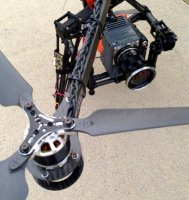fltundra
Member
Manufactures certainly don't seem to make it easy to compare specifics, so confusing..
I don't know if I did the math correctly but on:
4S it takes .4827A per pound of thrust
6S it takes .5072A per pound of thrust
Seems like a fairly negligible difference. Is there any way to figure out approximate flight time from the information KDE provides on their data sheet?
I see a lot of people going with much lower KV motors and larger props resulting in longer flight times but it also appears to be less stable. I'd rather have a more stable MR with 10 minutes of flight time than trying to get 30 minutes of flight time. But its hard to figure out the best components, I don't trust eCalc.
Also, has anyone used these ESC's with the KDE 2814XF-515? http://www.quadframe.us/collections/motors-and-propellers/products/dys-esc-40a-simonk
Chuck,
If you are not going with the KDE esc's, go with the Castles, trust me. They work flawless with the SuperX and the KDE's.

